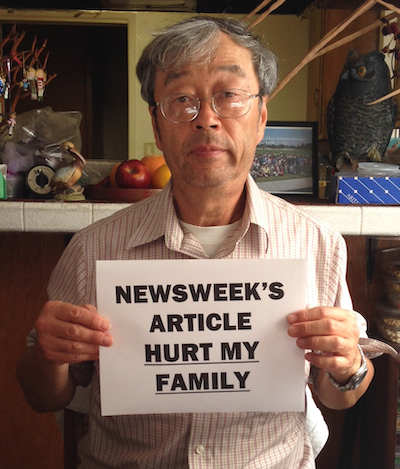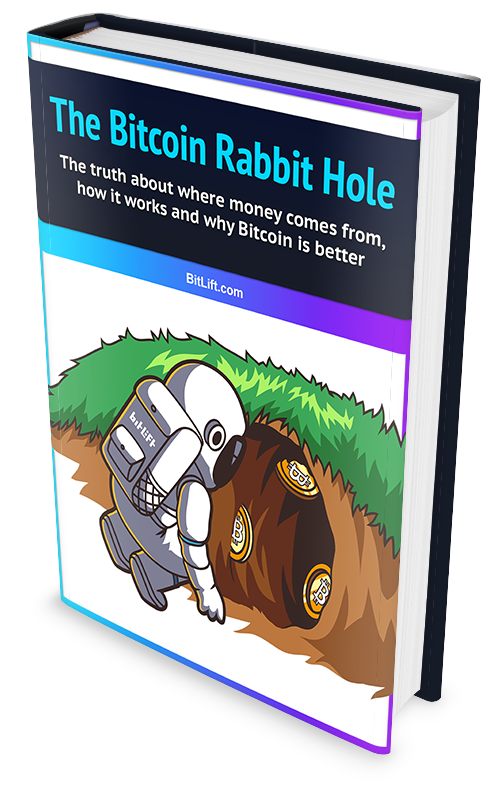On Halloween October 31, 2008, someone by the name of Satoshi Nakamoto sent an email from satoshi@visionmail.com to “The Cryptography Mailing List” titled: Bitcoin P2P e-cash paper. The email said:
I’ve been working on a new electronic cash system that’s fully peer-to-peer, with no trusted third party.
The paper is available at:
http://www.bitcoin.org/bitcoin.pdf
The main properties:
Double-spending is prevented with a peer-to-peer network.
No mint or other trusted parties.
Participants can be anonymous.
New coins are made from Hashcash style proof-of-work.
The proof-of-work for new coin generation also powers the
network to prevent double-spending.
Bitcoin: A Peer-to-Peer Electronic Cash System
Abstract. A purely peer-to-peer version of electronic cash would allow online payments to be sent directly from one party to another without the burdens of going through a financial institution. Digital signatures provide part of the solution, but the main benefits are lost if a trusted party is still required to prevent double-spending. We propose a solution to the double-spending problem using a peer-to-peer network. The network timestamps transactions by hashing them into an ongoing chain of hash-based proof-of-work, forming a record that cannot be changed without redoing the proof-of-work. The longest chain not only serves as proof of the sequence of events witnessed, but proof that it came from the largest pool of CPU power. As long as honest nodes control the most CPU power on the network, they can generate the longest chain and outpace any attackers. The network itself requires minimal structure. Messages are broadcasted on a best effort basis, and nodes can leave and rejoin the network at will, accepting the longest proof-of-work chain as proof of what happened while they were gone.
Full paper at:
http://www.bitcoin.org/bitcoin.pdf
Satoshi Nakamoto
Many of the readers frequenting this mailing list were engineers and cypherpunks who were familiar with the idea of using cryptography to create digital money. Projects like B-Money, Hashcash and Bitgold had been tried before and many of these previous projects are referenced in Satoshi’s writing, however none of them could crack the code when it came to trustlessness.

After a few months of emails, conversations and Q&A with the crypto mailing list community, Satoshi released version 0.1 of the Bitcoin software on January 9, 2009. This is also the first time Satoshi mentions publicly that “Total circulation will be 21,000,000 coins.”
The first 50 bitcoins came into existence all at once on January 3, 2009 as a block reward for mining the first block in the bitcoin blockchain – aka the genesis block. The genesis block data also contains the text:
The Times 03/Jan/2009 Chancellor on brink of second bailout for banks
On Feb 11, 2009 Satoshi announced Bitcoin in the P2P Foundation forums where he further outlined his reasoning for his creation:
“The root problem with conventional currency is all the trust that’s required to make it work. The central bank must be trusted not to debase the currency, but the history of fiat currencies is full of breaches of that trust. Banks must be trusted to hold our money and transfer it electronically, but they lend it out in waves of credit bubbles with barely a fraction in reserve. We have to trust them with our privacy, trust them not to let identity thieves drain our accounts. Their massive overhead costs make micropayments impossible.”
Over the next couple years, Satoshi continued to contribute to the bitcoin code base and frequented the bitcointalk.org forums which he setup and remains an active hub for technical bitcoin discussion to this day.
On December 11, 2010, Satoshi posted one of his final messages in the forums in response to this PC World Magazine article pointing out that Wikileaks could accept donations in Bitcoin now that payment processors refused to do business with them:
“It would have been nice to get this attention in any other context. WikiLeaks has kicked the hornet’s nest, and the swarm is headed towards us.”
And just like that, Satoshi was gone. And he was right, a few months later Gavin Andresen, the developer Satoshi left in charge of the code, accepted an invitation to present Bitcoin at CIA headquarters for the US intelligence community.
According to Nathaniel Popper in his book Digital Gold:
…he had continued to e-mail with a select number of developers, including Gavin, Martti, and Mike Hearn, a Google programmer in Switzerland, who got drawn into the project after the WikiLeaks blockade. In late April Hearn politely asked how involved Satoshi intended to be moving forward.
“Are you planning on rejoining the community at some point (e.g. for code reviews), or is your plan to permanently step back from the limelight?” he asked.
“I’ve moved on to other things” Satoshi wrote back.
“It’s in good hands with Gavin and everyone.”
Satoshi’s final e-mails went to Martti, whom Satoshi asked to take full ownership of the Bitcoin.org website.
“I’ve moved on to other things and probably won’t be around in the future,” Satoshi wrote to Martti, in early May, before transferring the site to Martti and disappearing into the ether.

As you can imagine, there’s been wild speculation as to the identity of the mysterious Satoshi Nakamoto. In March 2014, Newsweek released an article claiming they had found Satoshi and his name is Dorian Nakamoto. The media frenzy reached such a level of epic insanity that Satoshi him(or her?)self came out of hiding for one final message:
“I am not Dorian Nakamoto.”
OK now Satoshi is really gone.

One popular theory regarding Satoshi’s identity is that he was Hal Finny. Hal was an engineer for PGP Corporation, the first person to respond congratulating Satoshi for the release of Bitcoin v0.1 and the recipient of the first ever bitcoin transaction on January 12, 2009 when Satoshi sent him 10 bitcoins.
Hal Finny died of ALS a few months after Satoshi’s final message. Not only is it possible that Satoshi died along with him, but the over 1,000,000 bitcoins estimated to of been mined and owned by Satoshi have never been moved and may have been lost forever.
It’s highly likely that Satoshi planned to disappear all along, as the ultimate evidence that peer-to-peer electronic cash could survive and thrive without the need to trust anyone or anything. Satoshi’s anonymity and eventual disappearance may turn out to be the greatest gift Satoshi gave to Bitcoin.



